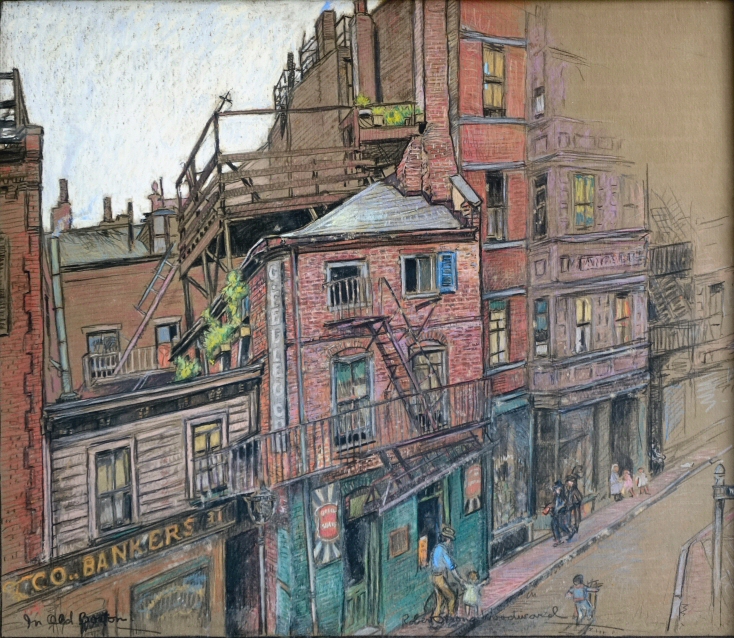Quick Reference
1930-'31
Union Street
Boston, MA
Pastel on Board
Urban Landscape
Boston
24 x 27
Myles Standish Gallery, Mar. 1931
Smith Coll. Tryon Gallery, 1931
Mt. Holyoke Coll. Dwight Hall, 1931
Williston Academy, 1933
Northfield Seminary, 1933
Mass Mutual Life Ins. Co., 1935
Deerfield Valley Artist Assoc., 1937
Myles Standish Gallery, 1944
Unknown
NA
Related Links
Featured Artwork: In Old Boston
RSW's Diary Comments
Woodward did not keep a diary of his chalk drawings.
Editor's Note:
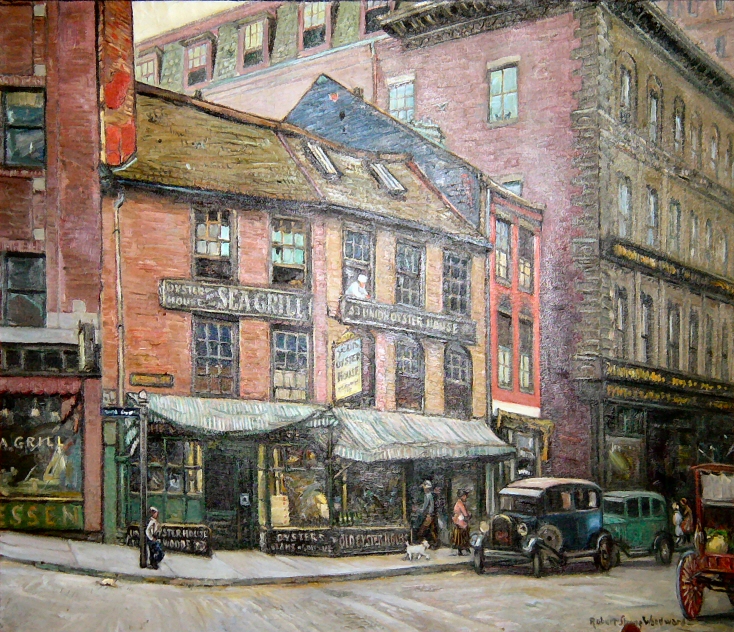
 In Old Boston, 1931, oil. This painting in no way
In Old Boston, 1931, oil. This painting in no way
resembles the pastel of this page. Yet we do believe
there is an oil painting of the pastel scene. We simply do
not know its name or what ever became of it. However,
there is a 27" x 30" oil with the same name exhibiting.
around the same time but never at the same show as the
chalk or the 36" x 42" painting by the same name- hmm...
As an aside, the pastel above is the artist's rare attempt
at emulating the NYC "Ashcan" school's methodology,
"art rooted in the raw, visceral reality of the city,"
much the same way RSW was doing for the old NE farm.
Making sense of Woodward's Boston paintings are perhaps the most difficult process we have encountered
putting together the website. In 1930, Woodward temporarily swapped homes with his dear cousin
Florence Haeberle who was living in West Newtown, MA, at the time. He went there to paint as part of the city's year
long 300th birthday celebration. We believe Woodward was there to capture scenes of old Boston while its citizens were
feeling nostalgic. The paintings are among the most romantic paintings of his entire catalog, such as, Ye Ole Oyster House
and the since demolished T Wharf.
The complications arise from his confusing painting diaries and the fact that:
(1) he made varying sizes and versions of the same scene; (2) then named them similarly, like with this chalk being named
the same as an oil by a different subject; (3) while exhibiting the various sizes at the same time at differing shows; and
finally (4), seemingly not satisfied with their names. He changed some to another name years later and sometimes referred
to other paintings, like the 36" x 42", oil version of In Old Boston the "Oyster House" several times in his
exhibition notes. It really is maddening and difficult to track.
Additional Notes
Boston Globe, March 10, 1931 by A. J. Philpott in
regard to the oil painting by the same name:
"...a picture that should be in the 'old state house', for it shows one of the few architectural bits of old Boston along Union Street which carry back to the 18th century. And it is painted in just the right key."
 Note the above critique refers to the oil painting,
of which this drawing was a copy. We do not know the whereabouts of the oil.
Note the above critique refers to the oil painting,
of which this drawing was a copy. We do not know the whereabouts of the oil.
 A large portion of the
right-hand side appears unfinished. It was not uncommon in a number of RSW pastels,
in this time period. It was an attempt, in part, of Woodward using modern devices
such as these unfinished areas to give it a sketch-like feel to it. There are a number
of chalk drawings from this time period where the artist leave it to you fill in the
rest.
A large portion of the
right-hand side appears unfinished. It was not uncommon in a number of RSW pastels,
in this time period. It was an attempt, in part, of Woodward using modern devices
such as these unfinished areas to give it a sketch-like feel to it. There are a number
of chalk drawings from this time period where the artist leave it to you fill in the
rest.
 This chalk drawing is privately owned.
This chalk drawing is privately owned.
 Just for fun, Click
Here to learn what a good steak or lobster dinner cost in the 1940's
Just for fun, Click
Here to learn what a good steak or lobster dinner cost in the 1940's
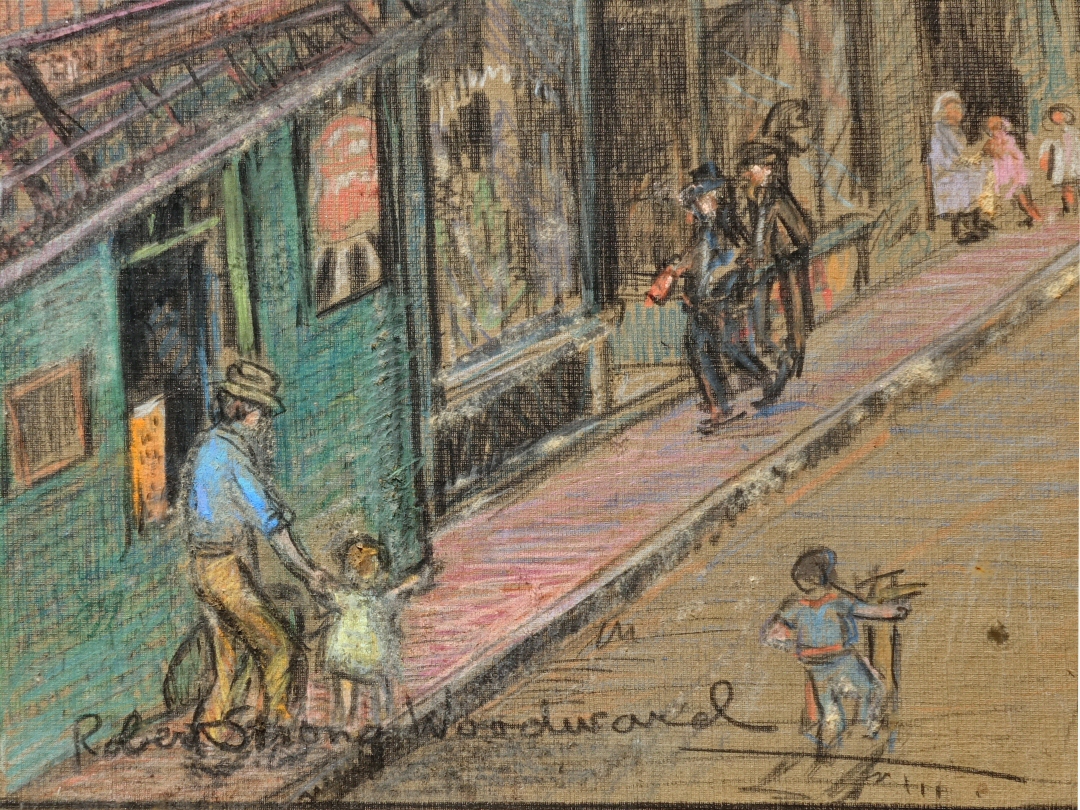
 People on the Street
People on the Street
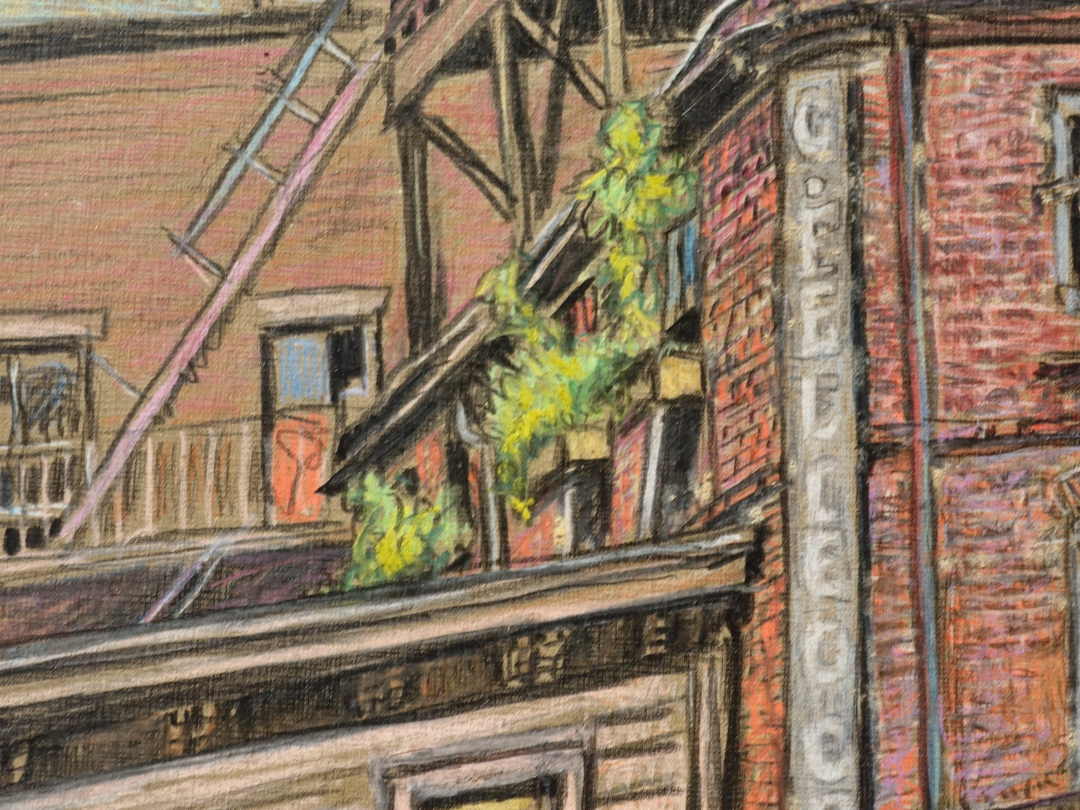
 Close up of the planters
Close up of the planters
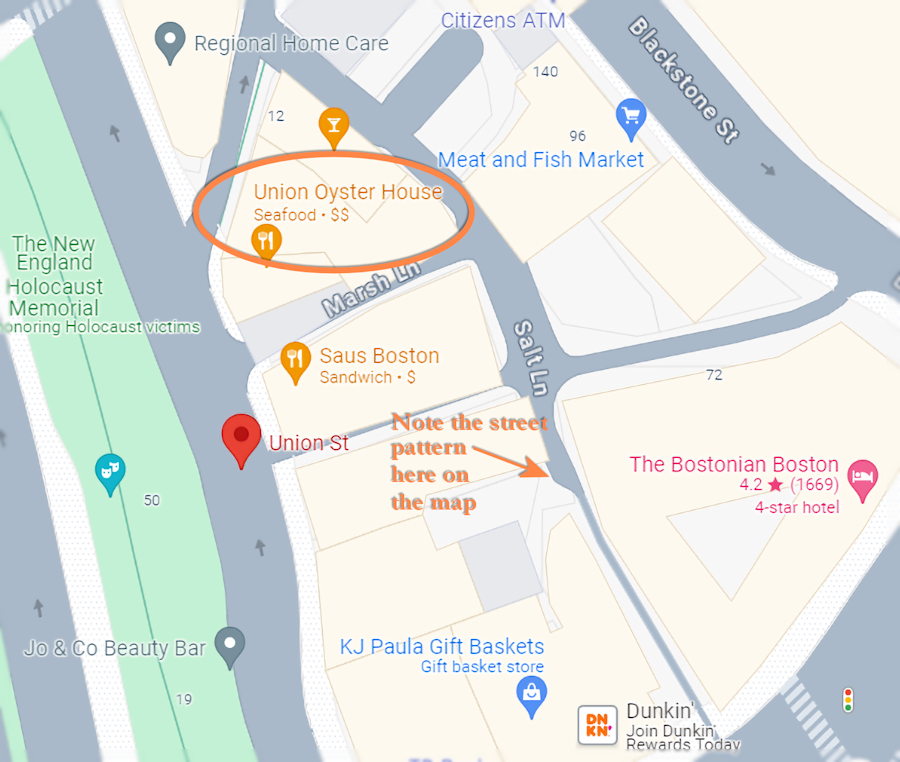
 A capture of the area on Google Maps
A capture of the area on Google Maps
If you look closely at the road area of the chalk drawing
you see that the street widens just to the lower right.
This map shows a similar street pattern on Salt Lane.
 The neighborhood street you see in the pastel painting above is most likely in the same area
as the Ole Oyster House on Union Street. It appears more residential, meaning less touristy than the crowd you would see around
the famous restaurant but we have been unable to identify it for certain. However, if you see how the street widens from a narrow
path to a wider one. This scene could possibly be Salt Lane immediately behind the oyster house building. Note there are no cars on
the "street" near what is probably just an alley people can walk.
The neighborhood street you see in the pastel painting above is most likely in the same area
as the Ole Oyster House on Union Street. It appears more residential, meaning less touristy than the crowd you would see around
the famous restaurant but we have been unable to identify it for certain. However, if you see how the street widens from a narrow
path to a wider one. This scene could possibly be Salt Lane immediately behind the oyster house building. Note there are no cars on
the "street" near what is probably just an alley people can walk.
Examine the Google map captured image to the left and
you will see a similar angle of road just behind the Oyster House on Salt Lane.
For an excellent map of Boston in 1895
CLICK HERE. The map will open in a new tab. Zoom in on it and see if you can find the location of the Ole Oyster House.
With the development of the new government center in the 20th century and the big dig of the 21st century. The area has changed so
much. However, if you use the location of Faneuil Hall, and find Hanover Street you will locate Green Dragon Lane today known as
Union Street. Union Street did exist in 1895, just not south of Hanover.


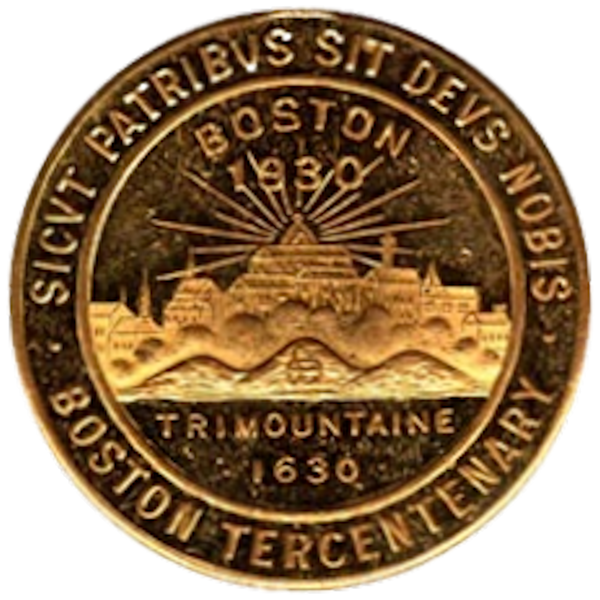 relationship with
relationship with 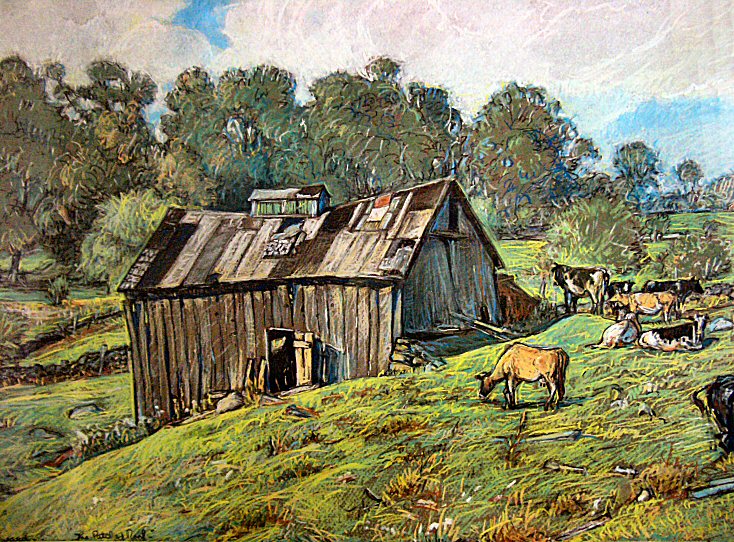
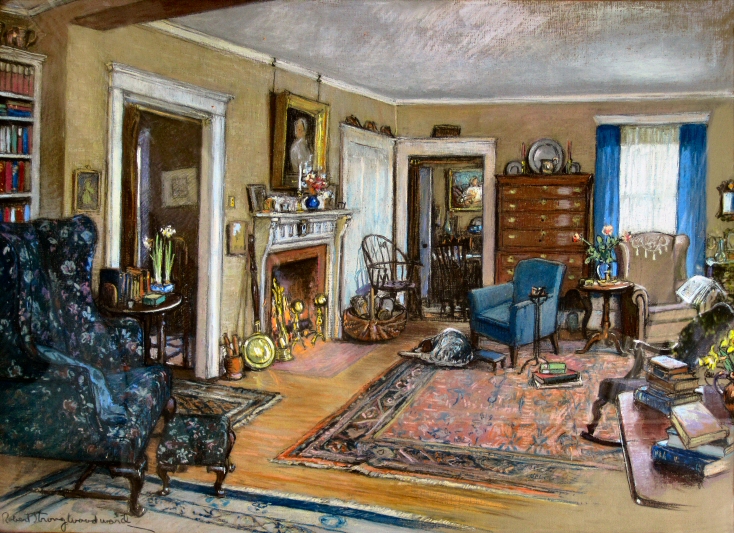
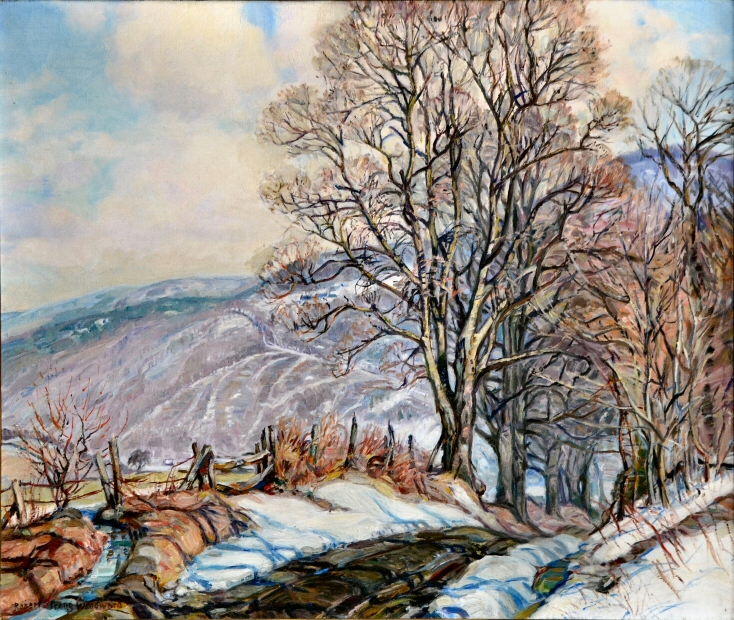
.png)

